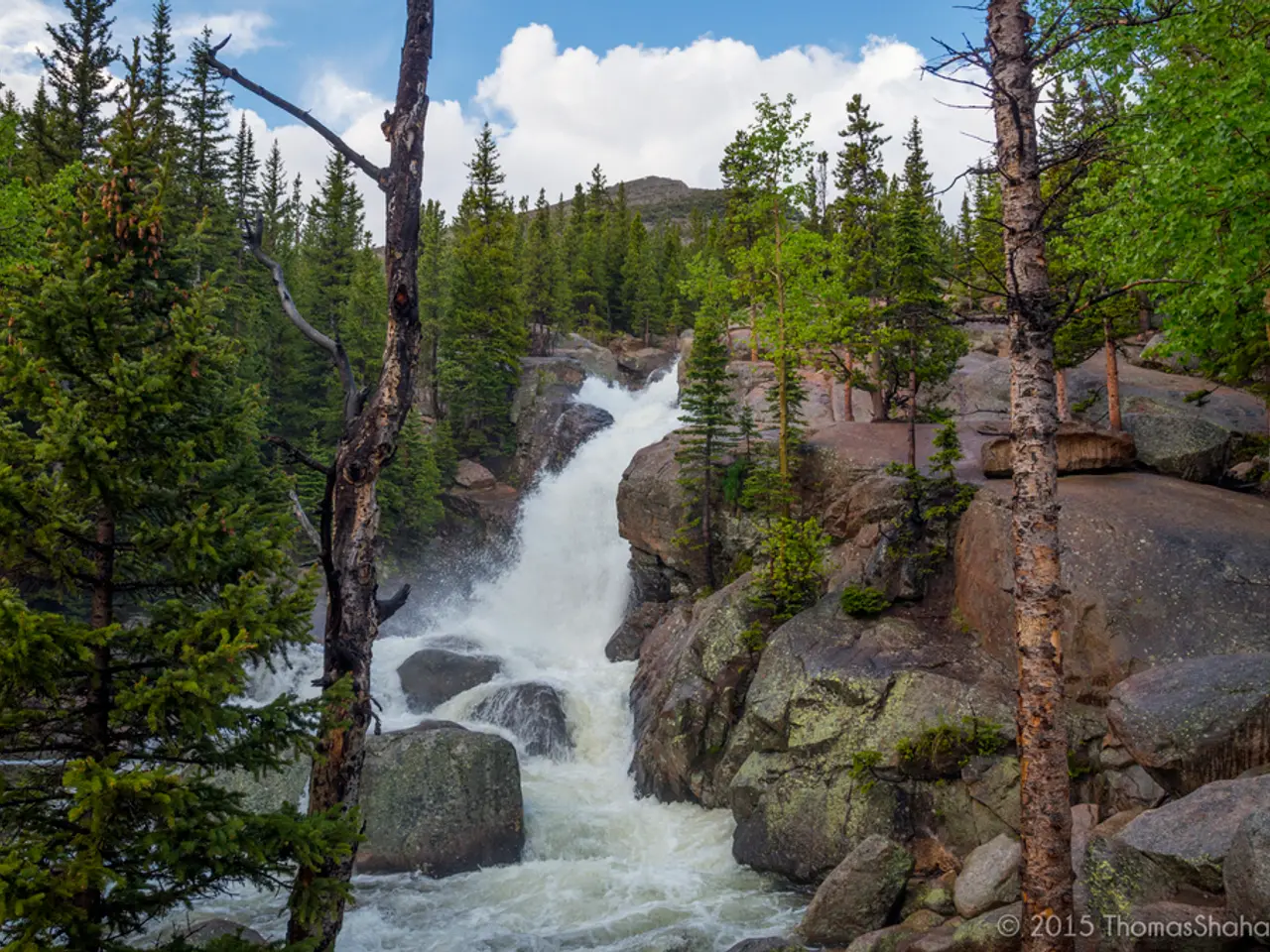Adrenaline-Pumping Mount Rainier National Park Hike Provides Visually Stunning Rewards, Despite Potential Perils
Challenging Hike to Camp Muir in Mount Rainier National Park
Mountain enthusiasts seeking an exhilarating adventure should consider the Camp Muir Trail in Mount Rainier National Park. This strenuous hike, one of the most thrilling mountainside adventures in the US, offers breathtaking views and a taste of the alpine environment, but it comes with its own set of challenges.
The trail, approximately 4.5 miles long, climbs over 4,000 feet from the Skyline Trail in Paradise. The initial stretch of the trail can be shrouded in mist, creating an otherworldly atmosphere that adds to the trail's allure. As hikers ascend beyond the clouds, they are greeted with panoramic views of the Cascade Range, with Panorama Point offering a glimpse across the range that is second only to those at Camp Muir itself.
However, the Camp Muir Trail is not for the faint-hearted. The steep elevation gain of about 4,800 feet over 4.4 miles makes it a challenging climb. The high altitude, with Camp Muir situated at 10,188 feet, can cause altitude sickness even for experienced hikers. Furthermore, the trail can present fog, snow, ice, and severe weather conditions, including whiteout blizzards.
To navigate these challenges, hikers need to be well-prepared. Being in good physical condition is crucial due to the steep climb and altitude. Appropriate gear is also essential, with sturdy boots, layers for cold and wind, navigation tools, and possibly crampons or ice axes depending on conditions necessary. Hikers must also be weather-aware, closely monitoring forecasts and being prepared to turn back if conditions worsen.
Navigation skills are also key, as the risk of crevasses and steep cliffs requires solid route-finding capabilities, especially in snowy or low-visibility conditions. Experience or guidance is often beneficial, as the trail can be safer when done with someone experienced or in a guided group.
Camp Muir marks the highest point an average hiker can reach on Mount Rainier without requiring a climbing permit or guide. It is worth noting that Camp Muir is named after John Muir, the famous naturalist who summited Mount Rainier in 1888. The delicate subalpine meadows below are part of ongoing restoration efforts, indicative of the fragile ecosystem encountered early on the trail.
Anyone hiking to Camp Muir needs to bring the 10 essentials, including a map or navigation device, sun protection, clothing layers, head lamps or flashlights, first-aid, fire starting materials, repair kits, hydration, food, and an emergency shelter.
In conclusion, hiking to Camp Muir requires thorough preparation physically, mentally, and logistically due to altitude, terrain, and weather challenges, making it a strenuous and potentially hazardous endeavor that must be respected. For those up to the challenge, the rewards are unforgettable.
Sports enthusiasts might find the physical exertion of the Camp Muir Trail comparable to intense workouts found in sports training guides. After reaching Camp Muir, mountain enthusiasts can enjoy breathtaking views that rival those found in sports arenas, showcasing the beauty of the Cascade Range.








